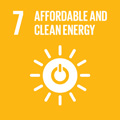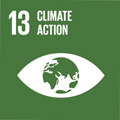- Docente: Paolo Gasperini
- Credits: 6
- SSD: GEO/10
- Language: Italian
- Teaching Mode: In-person learning (entirely or partially)
- Campus: Ravenna
- Corso: First cycle degree programme (L) in Environmental Sciences (cod. 8011)
Learning outcomes
At the end of the course the student has a basic understanding of physical phenomena that occur within the solid Earth and the physical-mathematical models that describe them in the framework of the dynamics of plate tectonics. He can: - apply these models to solve simple quantitative problems of gravimetry, geomagnetism, seismology and geothermics; - understand the conditions of environmental risk associated with geophysical phenomena.
Course contents
Effects of physical processes within the solid Earth on the natural environment and geophysical survey tools useful for environmental risk assessment and mitigation.
Physical theory of the Earth, structure, composition, moment of inertia. Plate tectonics, types of tectonic margin, plate motion, computation of relative velocities, composition of plate motions.
Earth's heat flow, heat flow measurements and geothermal prospecting, thermal budget of the Earth, heat conduction law, radioactive heat production, time dependent conduction, similarity variable, cooling of the oceanic lithosphere, ocean floor topography, sea-level variations.
Earth's gravitational field, geoid, reference ellipsoid, normal gravity, gravity measurements and gravimetric prospecting, reduction to the ellipsoid, Faye and Bouguer corrections, gravity anomalies, Airy and Pratt isostatic compensation models.
Geomagnetism, magnetic properties of the matter, Earth's magnetic field, source, measurements, geomagnetic elements, paleomagnetism.
Stress, strain and elasticity. Seismic waves, seismic rays, reflection and reflection, seismic prospecting, geometrical spreading, seismic wave velocity within the Earth, density profile, surface waves, anelastic attenuation.
Earthquakes, hypocenter and magnitude, seismic moment and released energy, focal mechanisms, spatio-temporal statistical properties of earthquake occurrence, historical seismic catalogs, macroseismic intensity, method to quantify seismic historical information, seismic generation models, recurrence, prediction, seismic hazard assessment, seismic zonation in Italy, seismic regulations for new buildings.
Readings/Bibliography
Lecture notes of the teacher.
E. Boschi e M. Dragoni, Sismologia, UTET, 2000.
D. Turcotte and G. Schubert, Geodynamics, Cambridge, 2002.
C.M.R. Fowler, The solid Earth, Cambridge, 2005.
T. Lay and T. C. Wallace, Modern global seismology, Academic Press, 1995.
Teaching methods
Assessment methods
Written exam consisting of two free-running topics a questionnaire with multiple answers, formulas and definitions, and the resolution of two problems. Short oral discussion of the written exam.
Teaching tools
Computer projector.
Office hours
See the website of Paolo Gasperini
SDGs



This teaching activity contributes to the achievement of the Sustainable Development Goals of the UN 2030 Agenda.
